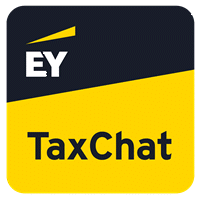Fidelity does not provide legal or tax advice. The information herein is general and educational in nature and should not be considered legal or tax advice. Tax laws and regulations are complex and subject to change, which can materially impact investment results. Fidelity cannot guarantee that the information herein is accurate, complete, or timely. Fidelity makes no warranties with regard to such information or results obtained by its use, and disclaims any liability arising out of your use of, or any tax position taken in reliance on, such information. Consult an attorney or tax professional regarding your specific situation.
Discount offers valid only when using a link on Fidelity.com.
Software products are provided as a convenience to you, and Fidelity bears no responsibility for your use of, and output associated with, such products. The information and products made available to you are not intended to be, and should not be construed as, legal or tax advice or a legal opinion.
Before using this information, review important legal information and terms of use applicable to products, services, and/or information provided or accessed herein by the following companies:
Intuit®
The use of the TurboTax branded tax preparation software and web-based products is governed by Intuit's applicable license agreements. Intuit, the Intuit logo, TurboTax and TurboTax Online, among others, are registered trademarks and/or service marks of Intuit Inc. in the United States and other countries and are used with permission. Intuit is not affiliated with Fidelity Brokerage Services (FBS) or their affiliates. Intuit is solely responsible for the information, content and software products provided by Intuit. Fidelity cannot guarantee that the information and content supplied is accurate, complete, or timely, or that the software products provided produce accurate and/or complete results. Fidelity does not make any warranties with regard to the information, content or software products or the results obtained by their use. Fidelity disclaims any liability arising out of your use (or the results obtained from, interpretations made as a result of, or any tax position taken in reliance on information provided pursuant to, your use) of these Intuit software products or the information or content furnished by Intuit.
EY TaxChatTM
Some tax topics or situations may not be included as part of this service. "EY TaxChat" name is owned by EYGN limited and all rights are reserved. "EY TaxChat" is a registered trademark in the United States, United Kingdom, and various other jurisdictions.
The third-party trademarks and service marks appearing herein are the property of their respective owners.



